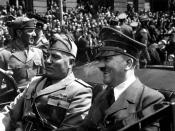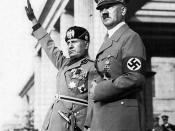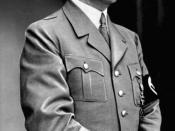Like many excellent works, William Golding's novel, The Lord of the Flies can be read on many different levels. It is possible to read the book literally, as a mere story about boys marooned on an island. It is also possible to read the book as an indictment of the nature of man - as being pure evil without society's boundaries. A further analysis of The Lord of The Flies reveals something else - the novel has many references to religious persecution throughout history. Golding uses many religious elements along with metaphors representing the death of Jesus, the torture of Jews in the Holocaust, and the ascent and reign of Hitler in Nazi Germany to present an underlying theme of religious persecution that proves his grim outlook on the nature of man.
Golding's use of religious elements allows for the plausibility of the religious persecution theme. The island the boys find themselves on is pristine and untouched - like the Garden of Eden - until they arrive.
However, once the boys arrived, they left a scar on the island, in much the same way Adam and Eve left a scar in the Garden of Eden. Another religious element Golding uses is in the title of the book. 'Lord of the Flies' translates into 'Beelzebub' in Greek - a name for the Devil. This suggests the entire book is about the epitome of religious evil - the Devil himself. A final religious element is well hidden. The 'stick sharpened at both ends' exists not only in Golding's description of the killing of the sow, but also in the Bible in the story of David and Goliath. After David kills Goliath, the giant's head is cut off and placed on a 'stick sharpened at both ends' and is used to frighten...


